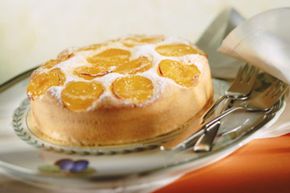There might be more kinds of cakes in the world than you could sample in a lifetime, but according to Joy of Baking, most of them fall into two categories: foam and butter. Foam cakes are comprised of flour, sugar, eggs, butter (in some cases) and flavoring. They get their light, fluffy texture from air beaten into egg whites, and, as a bonus, they're not as unhealthy as other types of cake. Some are completely fat free, but those containing whole egg (like sponge cake) or butter (like génoise and gâteau) have a slight amount of fat. (If a cake is air-leavened, it isn't considered butter cake even if it contains butter.)
Butter cakes, such as pound cake, depend on a chemical leavening product such as baking soda or baking powder. Of course, butter cakes tend to contain significant quantities of butter (or margarine or shortening), which adds firmness and heft. Otherwise, the ingredient list is similar to foam cakes: flour, sugar, butter and flavoring.
Advertisement
Though it seems like our four subjects are quite similar, we'll discuss their respective (and delicious) roles in pastry baking.
Advertisement

